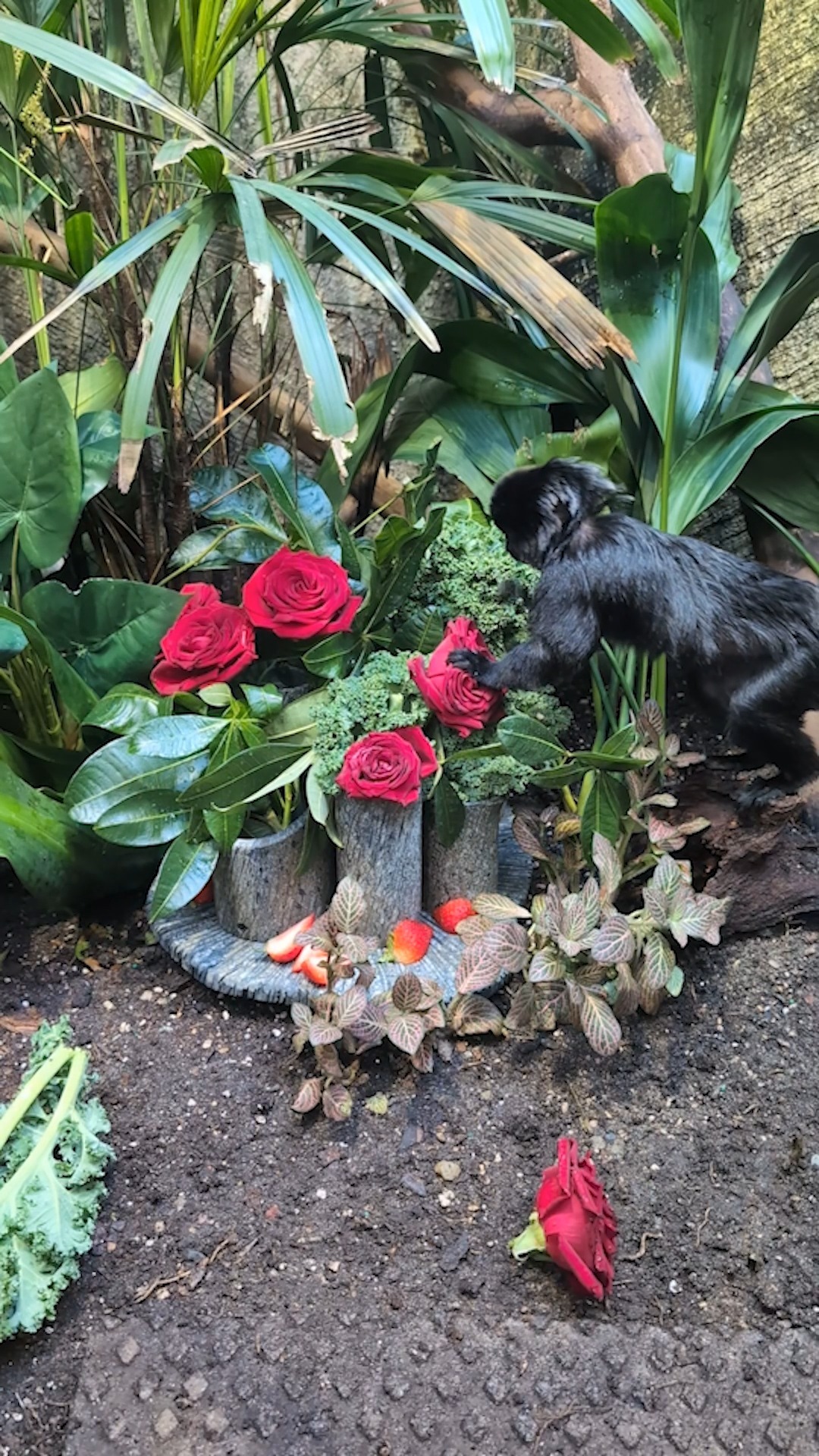- Understand the significance of roses as symbolic gifts for animals on Valentine’s Day, and how this tradition enriches their lives.
- Explore the connection between roses and wildlife conservation efforts, including the role of botanical gardens and zoos.
- Examine the impact of environmental education in promoting awareness about the importance of plant-animal interactions.
- Investigate case studies of popular animals, like monkeys and sloths, and how roses are used to stimulate their natural behaviors.
- Evaluate the benefits of incorporating roses into zoo enrichment programs, fostering better animal welfare and education.
Roses have long symbolized love and affection in human culture, making their appearance on Valentine’s Day a natural fit. However, the use of roses extends beyond human interactions and into the fascinating world of animal care, where they play a unique role in enriching the lives of our favorite zoo inhabitants. Understanding how these botanical gifts contribute to animal welfare can broaden our appreciation for the interconnectedness of flora and fauna.
The use of roses as meaningful gifts in zoos stems from the desire to recreate elements of natural habitats that engage animals in stimulating ways. These beautiful flowers offer much more than aesthetic appeal; they provide tangible benefits to the animals’ cognitive and physical health. For instance, the scent and texture of roses can evoke curiosity and encourage exploration, particularly in primates like monkeys, who are naturally inclined to investigate their surroundings. Monkeys, with their sophisticated cognitive faculties, respond well to such sensory experiences, revealing insights into their problem-solving skills and social dynamics.
The role of roses in wildlife conservation is a testament to how botanical and zoological disciplines can collaborate for broader ecological goals. Zoos and botanical gardens are increasingly partnering to emphasize the importance of both animal and plant conservation. By showcasing roses as part of themed exhibits, institutions highlight the significance of plants in supporting diverse ecosystems. Visitors are educated on plant-animal interactions, offering them a holistic view of biodiversity conservation. This inter-disciplinary approach is essential in today’s fast-changing environmental landscape, and roses serve as a nexus for educational narratives.
Animal behaviorists have observed that introducing roses to zoo animals can stimulate natural behaviors, thereby enriching their environment. Among sloths, for example, roses play a subtle yet impactful role. These slow-moving mammals, native to rainforest canopies, benefit from the incorporation of roses as part of their dietary enrichment. The leaves and petals can be used as occasional treats, encouraging sloths to exhibit their innate foraging behaviors. This kind of enrichment is crucial, as it conforms to the animal’s dietary needs while promoting activity that mimics their natural behavior in the wild.
Roses also offer significant educational value. Zoo staff utilize them within interpretative programs to explain plant-animal symbioses and the importance of habitat preservation. By inviting visitors to observe how animals interact with roses, zoos offer compelling educational experiences. Educators can discuss topics such as pollination, herbivory, and the intricate food webs supported by diverse plant species. This expanded understanding fosters an appreciation for conservation efforts, encouraging visitors to support initiatives aimed at preserving both wildlife and their habitats.
Incorporating roses into enrichment programs has numerous advantages, going beyond simple animal stimuli. For instance, roses can help mitigate stress in zoo animals, a vital aspect of promoting overall well-being. Monkeys engaged in positive interactions with roses may display reduced aggression and increased social bonding. Similarly, sloths offered rose-infused treats often show signs of contentment, crucial for enhancing their quality of life within the confines of a zoo. These behavioral improvements are not merely anecdotal; they are reflective of a growing body of research advocating for naturalistic enrichment as a tool for animal welfare.
While the primary association of roses with love may skew towards human customs, their influence on animal health and happiness is an intriguing facet worth exploring. By bridging botanical sciences with effective zoo management practices, roses can enhance both ecological education and conservation. They remind us of the intricate links between flora and fauna, encouraging a greater appreciation for the world we share. Through thoughtful integration into animal care and educational initiatives, roses prove that these seemingly simple flowers can serve a profound purpose within modern zoological contexts.
*****
Source Description
Roses for some of our favs on Valentine’s Day ❤🐒❤🦥❤


